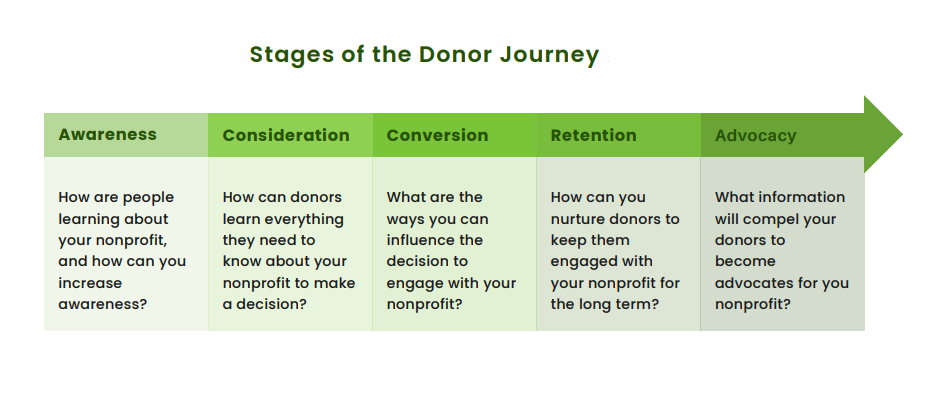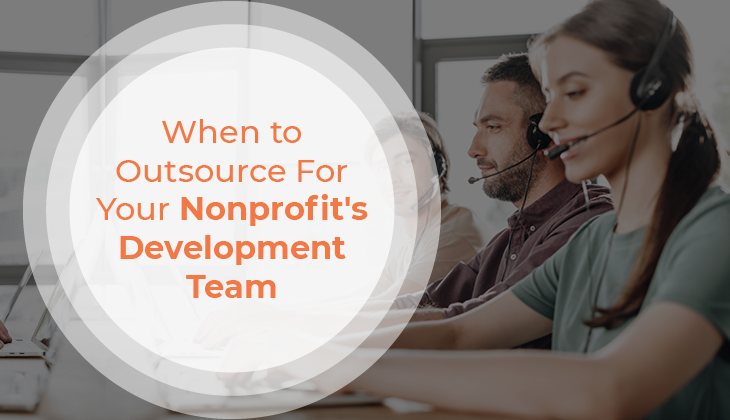
We’re going to talk about something that no one likes to talk about.
And, if we’re being honest, no one likes to talk about it because no CRM vendor can offer it.
Except CharityEngine.
We’re talking about granular donor attribution, which means that you, as a nonprofit, know the very specific (and often unique) donor journey of every single donor.
If you’re not a CharityEngine client, should you read this article? Sure, because at the end of it, you’ll understand what donor attribution is, why it should matter to your nonprofit, and what you can do with it. You’ll be able to ask your vendor informed questions and maybe even get them to add these features to your system.
Donor attribution is a game-changer. Let’s see why.
What is Donor Attribution?
It means that you assign credit to different channels a donor touches. Let’s say you’re running a year-end campaign. Your outreach includes social media, direct mail, and emails. All those channels drive donors to your website’s donation page. If you have a wildly successful campaign, you will want to pull a report that tells you which channel was the most effective at getting people to donate.
In analyzing that report, you learn that social media didn’t bring in any donations, email brought in some, but direct mail pieces got the highest and largest response. You’ve learned that direct mail has a significant impact on giving, and you now have the data to support a larger direct mail effort.
Without donor attribution, you’d be thrilled you ran a successful campaign, but you wouldn’t know why it was successful. You wouldn’t be able to zero in on exactly what was working, so you could do more of it and have an even more successful campaign.
When you can track the effectiveness of your channels, you can make strategic decisions about where to focus your fundraising efforts.
Why Does Donor Attribution Matter?
Making data-driven decisions is going to increase your fundraising. Full stop. When you can see which efforts are the most successful, that’s where you double down. And that’s where your numbers go up.
But there are other benefits to donor attribution:
- You save time and money. When you know where to focus your resources for the biggest gain, you’ll save staff time and nonprofit money. You’ll have a strategic, focused plan that works.
- You’ll know what works. Nonprofits can evaluate their campaigns through the lens of data, meaning clear patterns will emerge. This helps you fundraise smarter.
- You can personalize your engagement. Nonprofits can tailor messages to segmented groups or even individuals, strengthening the donor relationship and increasing loyalty.
- You’ll learn from your mistakes. If, in our earlier example, you learn that the time you spent crafting witty social media posts, or the money you spent on swag to offer as donation prizes, was ineffective, you won’t do it again. As time goes on and your data increases, the laser focus of your campaigns will sharpen until you are a fundraising machine.
Donor Attribution in Your CRM
We’ve been talking about digital marketing for nonprofits, and donor attribution fits in with this approach.
Savvy nonprofits are adopting these marketing strategies and applying them to fundraise successfully. But to leverage the powerful insights a marketing strategy can give a nonprofit, you must have the technology that can provide the data you need.
So let’s say you’re all in on the value of donor attribution. What’s next?
I’m not here to pitch one technology over another. I will say that your tech stack matters. And if you’re not tracking, scoring, attributing your donors using technology, your nonprofit isn’t as successful as it can be.
And then we can take it a step further and say that if you’re using many different channels to reach out to and engage donors and prospective donors, you’re halfway there. If you’re then crediting the right channels, you’re ahead of the fundraising game.
If you embrace these (more traditionally) marketing strategies, you need a tech stack that has a few features:
- A system with native tools and modules does not need third-party integrations to share data. If your direct mail and your emails and your events all come from the same system, that data is in one place and can be quickly—and accurately—analyzed for actionable insights. This point can’t be stressed enough: uploading and syncing data slows you down and invites vulnerabilities. Syncs also don’t bring over all the data that you get with native tools; often a sync will be limited to the most basic data. When all the data is in one place, it works together to offer insights you can’t get otherwise.
- You want granular tracking and attribution. As an example, CharityEngine tracks data at many levels, one of which is response and media channels. So for every donor, the software can tell you how you are reaching them (email) and how they’re responding to you (online). You’ll know if a donor got a direct mail piece and called the toll-free number or went to the custom URL to donate.
- And if someone gets that direct mail piece and doesn’t call the toll-free number and doesn’t hit the URL but mails in a check, that donation can be credited back to the direct mail outreach and the mail response.
- You want to be able to track donors, but you also want to zoom out and track campaigns. You need a system that collects and assigns all the data so you can pull reports that look at it from different points – outreach methods, campaigns, segmented audiences.
If you think about the donor journey, you have likely seen its stages.
 When your technology includes attribution features, you can look at every stage of this map and see which channels and messaging are most influential in moving a donor forward to the next stage.
When your technology includes attribution features, you can look at every stage of this map and see which channels and messaging are most influential in moving a donor forward to the next stage.
In other words, if your CRM offers granular donor attribution data, you know exactly how to get prospects to become donors, donors to become sustainers, and sometimes sustainers to offer major gifts.
You will not waste time and resources on outreach that doesn’t work!
Zero in on a Win
Now you know that a campaign planned without donor attribution data is little more than a guess. And of course you can have a great campaign with guesses, but any effort will be so much more successful with data-driven strategies.
So your next steps? Call your CRM vendor and ask about donor attribution. Ask how granular it is. Ask if there are plans to expand on this technology.
And, if you don’t like the answers, give us a call.

-2.png)

-1.png)